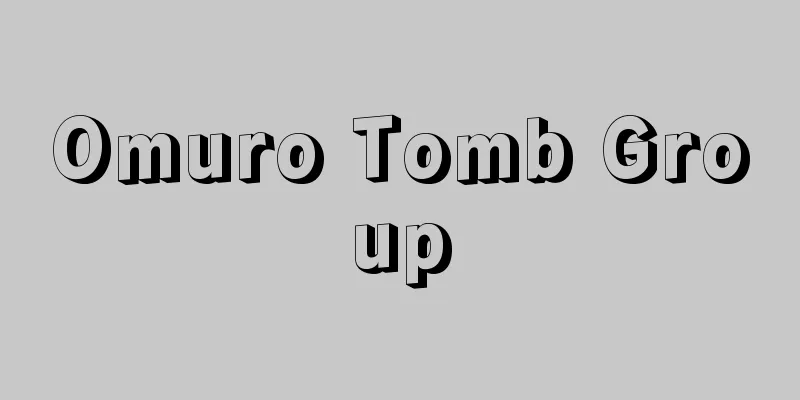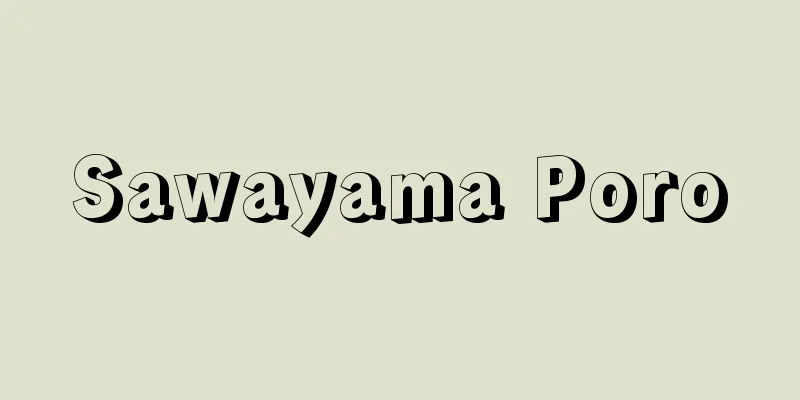Japanese painting

|
Traditional Japanese painting. The term "Nihonga" was established in the 1870s (late 19th century) as a counter term to Western painting, or oil painting, and traditional Japanese painting came to be collectively referred to as "Nihonga" without distinction of school or style. Therefore, the field of painting that is called Nihonga today includes, in a broad sense, Yamato-e (Yamato-e, Wa-e), Kara-e, sumi-e, Nanga, Western-style painting, and genre paintings such as ukiyo-e, but in a narrow sense it refers to the Kano school that was born from the exchange between Yamato-e and Kara-e, the Maruyama school that developed from the mid-Edo period onwards, and the flat, decorative paintings in the style of Yamato-e that became popular after the Meiji period. The so-called Kara-e paintings, which were introduced from China during the Heian period, became pictorial expressions suited to the natural environment of Japan, and delicate and elegant painting methods were devised that utilized Japanese sensibilities in line drawing and color combinations, decorating booklets and picture scrolls. These are called Yamato-e paintings. Ink paintings, which were introduced from the continent during the Kamakura and Muromachi periods, developed into large-scale Shohei paintings during the Momoyama period. The techniques of Yamato-e were incorporated into these paintings, and the thick painting technique, which used an abundance of gold leaf and gold paint, was used to decorate the sliding doors of temples and Shoin-style buildings, resulting in the Momoyama Kinpeki Shohei paintings by Kano Eitoku and others. In addition to these large-scale works, Yamato-e also showed its true talent in detailed depictions and expressions of customs, and the decorativeness of Yamato-e is also one of the traditional characteristics of Japanese painting. During the Edo period, the Kano school wielded influence as the official painters of the shogunate, but in the mid-Edo period, Maruyama Okyo created a new style by fusing Western perspective painting with the decorative expression of Japanese Yamato-e painting. This Maruyama school style of painting is still passed down in the Kyoto art world today. After the Meiji period, Yokoyama Taikan and others established a new style of Japanese painting based on the rediscovery and recognition of traditional Japanese painting advocated by Okakura Tenshin. The main exhibition venue for this was the Inten Exhibition organized by the Japan Art Institute (which was re-established after Tenshin's death), and today it forms one of the three major trends in Japanese painting along with the Nitten Exhibition and Sogakai Exhibition. Today's Japanese painting is close to Western painting, and is almost identical to Western painting in terms of concept and expression, with some artists applying paint thickly like oil painting, and there is a tendency to distinguish between the two only by the materials and the artist's background. Japanese painting mainly uses mineral pigments, and there are three types: rock paints (ultramarine blue, verdigris, etc.) made by crushing natural rocks into a powder; mud paints such as metallic powder (ochre, vermilion, red, gold and silver mud, etc.); and water-soluble water paints (orange, indigo, magenta, etc.). Gold and silver foil may also be used in combination. Japanese paintings are done on paper or silk. When doing so, it is necessary to apply a sizing agent (a mixture of water with dissolved alum and glue) beforehand to prevent the paint or ink from bleeding. In terms of technique, Japanese painting has its own traditions, such as brushwork techniques for drawing lines and techniques for shading colors, and compared to oil painting techniques, it is not something that anyone can do right away and requires considerable practice. Furthermore, traditionally, Japanese paintings were mainly mounted on scrolls, on folding screens, in Japanese-style frames, and as scrolls, but today they are often displayed in the same frames as Western paintings. This is also evidence of the Westernization of homes and the transformation of Japanese paintings from private indoor appreciation to the art of exhibitions. [Nakamura Yoshio] [References] | | | | | | |Source: Shogakukan Encyclopedia Nipponica About Encyclopedia Nipponica Information | Legend |
|
日本の伝統的な絵画。日本画の名称が確立するのは明治10年代(19世紀末)で、西洋画=油絵に対する語として生まれ、伝統的な日本の絵画を流派・様式の区別なしに、一括して「日本画」と呼称するようになった。したがって、今日日本画とよばれている絵画領域には、広義には大和(やまと)絵(やまと絵、倭絵)、唐絵(からえ)、水墨画、南画、洋風画をはじめ、浮世絵などの風俗画まですべてを含むことになるが、狭義には、大和絵と唐絵の交流によって生まれた狩野(かのう)派や、江戸時代中期以降に発展した円山(まるやま)派、さらに明治以降流行した大和絵風な平面的で装飾的な絵画をさす。 平安時代に中国から伝わったいわゆる唐絵は、日本の自然風土に適合した絵画表現となり、線の引き方、色の配合などに日本人の感覚を生かした繊細優美な画法が案出され、冊子(さっし)や絵巻物を彩った。これを大和絵という。鎌倉・室町時代に大陸から伝わった水墨画は、桃山時代に障屏(しょうへい)画の大作となって発展した。これに大和絵の手法を取り入れて、金箔(きんぱく)や金泥(きんでい)をふんだんに使った濃絵(だみえ)の手法で、寺院や書院造のふすまを飾ったのが狩野永徳(えいとく)らの桃山の金碧(きんぺき)障屏画である。大和絵はそうした大作のほか、細密描写や風俗表現の面でいかんなく本領を発揮したが、このような大和絵のもつ装飾性も、日本画の伝統的な特色の一つにあげられる。江戸時代、狩野派は幕府の御用絵師として勢力を振るったが、江戸中期になって円山応挙(おうきょ)は西洋の透視画法と日本の大和絵の装飾的な表現を融合させて新しい様式を生み出した。この円山派の画風は、今日の京都画壇に伝えられている。 明治以後は、岡倉天心(てんしん)が唱えた伝統的な日本絵画の再発見と認識のうえにたって、横山大観(たいかん)らが新しい日本画を打ち立てた。その中心発表機関となったのが、日本美術院(天心没後再興の日本美術院)による「院展」で、今日では「日展」と「創画会」とともに日本画三大勢力を形成している。今日の日本画は洋画と接近し、発想から表現までほとんど洋画と異ならず、絵の具を油絵のように厚塗りにする作家も出て、ただ材料と画家の出身によってのみ区別される傾向にある。 日本画の絵の具は鉱物質の顔料が主で、天然の岩を砕いて粉末にした岩絵の具(群青(ぐんじょう)、緑青(ろくしょう)など)、金属粉末などの泥絵の具(黄土(おうど)、朱、丹(たん)、金銀泥など)、水に溶ける水絵の具(代赭(たいしゃ)、藍(あい)、臙脂(えんじ)など)の3種があり、金銀箔なども併用され、紙または絹に描かれる。その際、まえもって礬水(どうさ)(明礬(みょうばん)を溶かした水に膠(にかわ)を混ぜたもの)をひき、絵の具や墨のにじみを防ぐ必要がある。技法的にも、線を引く運筆技法、色彩のぼかしの技法など、日本画独自の伝統があり、油絵技法と比べて、すぐにだれにでもできるというものではなく、かなりの修練を必要とする。 また、旧来の日本画は軸装、屏風(びょうぶ)仕立て、和額、巻物などの形が主であったが、今日では洋画と同じ額装による発表が多い。これも家屋の洋風化と、日本画が屋内の個人鑑賞から展覧会による会場芸術へと変貌(へんぼう)しつつある証左であろう。 [中村溪男] [参照項目] | | | | | | |出典 小学館 日本大百科全書(ニッポニカ)日本大百科全書(ニッポニカ)について 情報 | 凡例 |
<<: Sea of Japan - Nihonkai (English spelling) Japan Sea
Recommend
Hino [city] - Hino
A city in central Tokyo. Established as a city in ...
Emperor Kokutoku
Year of death: Hakuchi 5.10.10 (654.11.24) Year of...
Polymer catalyst
Polymers with catalytic properties. Catalysts are ...
Marine observation satellite
The first artificial satellite, GEOS-3, launched b...
Quatremère de Quincy, AC (English spelling)
… [Changes in concept] The concept of "Baroq...
Shoni Tsunesuke
A military commander in the Kamakura period. He w...
Liquid crystal display
An electronic device that displays numbers, lette...
Ion exchange extraction
…Organic ion exchangers include those made from s...
Nikolaevsk
...It is located on the left bank of the Tobol Ri...
House sitter - House sitter
An office established to manage and ensure the saf...
In Frit
…The oldest carvings, of elephants and hippos, ar...
Aniemachen [Mine] - Aniemachen
...It means "Great Ancestor God" in Tib...
Mattens, C.
…Official name: Commonwealth of AustraliaArea: 7,...
Atsuta Festival
〘Noun〙 The annual festival of Atsuta Shrine in Nag...
Ahmad Shah
1898‐1930 The seventh Shah of the Qajar dynasty. R...



![Baikal [Lake] - Baikal](/upload/images/67cc7d8ddb849.webp)





